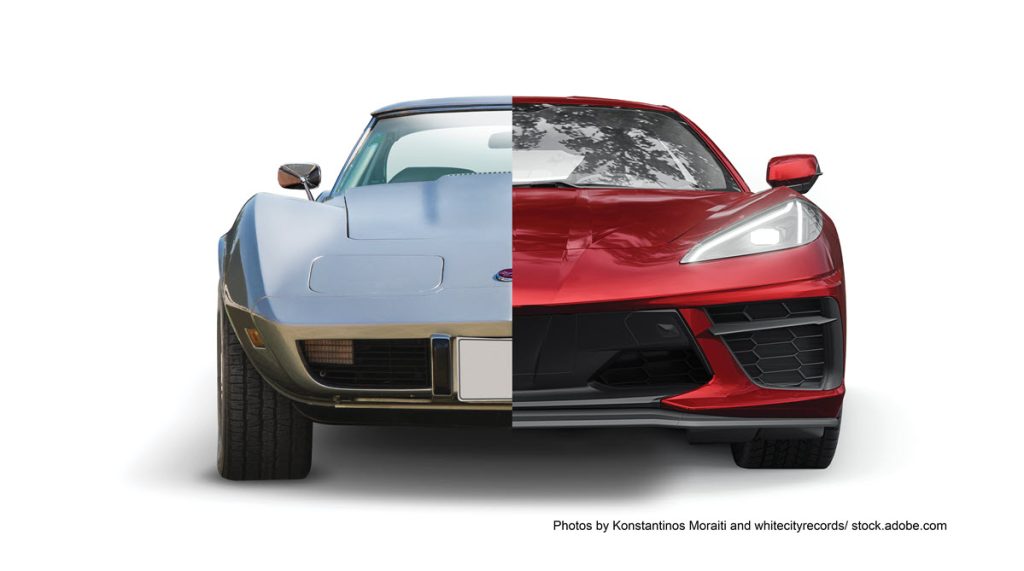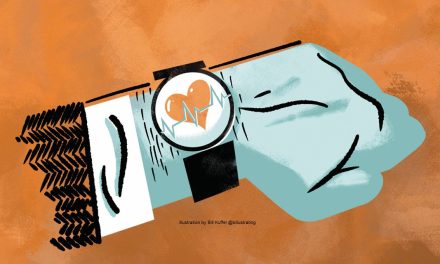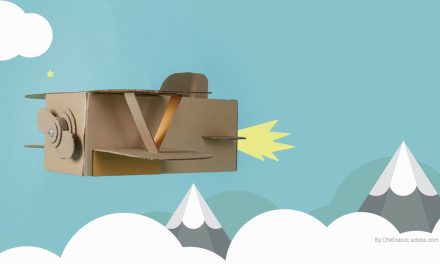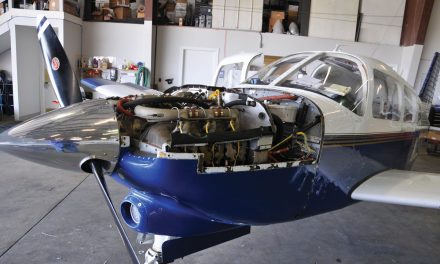Ever own a Corvette? I owned a 1974 Convertible. Great car, fun to drive and very impractical. Fast, sleek and simple. No satellite radio, nothing computerized. Just a cool car.
I have a friend that just bought a new Corvette. It has all the “bells and whistles.” His new Corvette has the ability to change the performance, the handling, and even what he sees on the dash. I think it might even have different adjustable interior colors. Or that might be another friend that bought a new car where the door lights up the logo when he opens it. These new cars are totally computerized.
When my friend picked up the Corvette at the factory, they assigned a “trainer” to work with him before he left the factory. There were a lot of new things to learn about the systems, the computer, the settings etc. Sure, he could have picked the car up at the dealership and got trained by the dealer’s staff, but he thought the experience at the factory with a factory approved trainer would be more thorough than the dealership.
On top of that he was able to sign up for a specialized driver training course in Nevada, in a Corvette (like what he bought), with a factory approved trainer that could run him through all kinds of scenarios with the car. High speed runs, cornering, adjustments to the suspension, how far he could push the car before it would start to slip. All those things we would want to know but will probably never use on the local streets.
After talking to a couple of other Corvette owners it appears that the factory checkout and driver training is well worth the time and money. In fact, many of them go back to the track in Nevada and take the class again to try and get more experience and better acquainted with their car.
What’s interesting about this is many of these Corvette owners are also aircraft owners. Many pilots are also car fanatics. I have had customers fly to Europe to pick up their new Porsche and take track training. I have others that attend track days and training programs on their high-performance cars around the country. Like aviation, it costs money, fuel, time, and wear and tear on the vehicles. But in the end, they all feel it’s well worth whatever the cost. Auto training is usually voluntary. And the owners still take and pay for the training without hesitation.
But aviation? Seems like many pilots resist training. Once you get your license and the FAA required ratings, the only training might be currency and insurance requirements. I know we’ve talked about training before, but I think we should discuss it again. Training is a big deal with the underwriters.
Your plane or the FBO?
Like the Corvette class on the track, you use the trainers’ cars. Same thing, if possible, in an aircraft. Training is tough on the plane. Single engine work, cycling the gear, and hard landings can be hard on the aircraft. If possible, do your training in someone else’s aircraft. I know you want to learn to fly your own airplane, but often the underwriters don’t want to insure you while you are training in your aircraft. They would like you to get your training at a school or FBO that has insurance with another underwriter. They want you to get the experience and put the hours in elsewhere, THEN, insure your aircraft with them. Not always possible but the idea is good.
If you are thinking about buying an aircraft that is different than what you are experienced in the best thing you can do is to get training prior to buying insurance.
A good example of this is a transitioning pilot. This would be any person moving from one type of aircraft to another such as single to twin, fixed gear to retractable, or even tri-gear to tailwheel. Chances are there is a training company somewhere that you can go to and get hours in their aircraft. They probably have insurance that is designed for that specific purpose (training).
What’s the advantage for you the new buyer? Usually it means less dual requirements and better rates when you actually buy the plane. And having hours or the new rating might make the difference in actually getting a quote or not. You would be amazed at the difficulty we are having just getting a quote for some aircraft and pilot combinations.
Another example might be a 100-hour single engine pilot wanting to buy a retractable gear aircraft. If the pilot does not have any retractable gear time, most underwriters will decline to quote. Underwriters don’t want to take the risk of a “newbie” forgetting to put the wheels down.
Five things to think about when training is required:
- If dual is required, it needs to be from qualified CFI, not your hangar buddy.
- Make sure you have at least the minimum dual required and appropriately signed by the CFI and recorded in your logbook.
- If you are flying “Cabin Class” or pressurized aircraft, they will require annual factory approved training.
- Factory (initial, ground, flight and recurrent) training needs to be from a “bonafide” and an “approved” trainer.
- Underwriters don’t usually tell you who is approved. Find your training company, have the broker submit their syllabus to the underwriter and see if they will approve them.
So, if the low total time pilot has about twenty-five hours of retractable gear time, that’s often enough for a few of the companies to provide a quote. It doesn’t have to be anything special. It just needs to be retractable gear time. Time in a Piper Arrow or a Cessna 172 RG counts as RG time the same way as the RG time in a Cessna 421 or a Piper Malibu.
Safety note. The “newbies” forget and so do the “oldies”: Just because you have thousands of hours, doesn’t mean you won’t make a mistake or have a mechanical failure. The number of gear-up landings listed every day in the FAA’s “Preliminary Accident and Incident Reports” web page is surprising. The other day the FAA listed eight accidents/incidents and a total of five were gear related. And that’s just the ones that are reported.
In my years of experience, many of the gear up landings are by high time and highly rated pilots. I have had pilots with tens of thousands of ours flying retractable gear aircraft, but just once they forgot to put the wheels down.
A while back I was reading an AOPA Air Safety Foundation report. It shows that through the years there have always been a large number of takeoff and landing accidents. Among other things, one year it revealed that airline transport pilots suffer a higher proportion of takeoff and landing accidents than student pilots, relative to each group’s percentage in the pilot population.” Leads me to believe that experience doesn’t always mean you won’t have a claim, problem or an accident.
And it’s not just fixed gear to retractable that creates issues. Transition from a tri-gear to a tail wheel aircraft can pose a risk too. Just because you have lots of tailwheel time in the logbook doesn’t mean you don’t need to get additional dual in a specific aircraft.
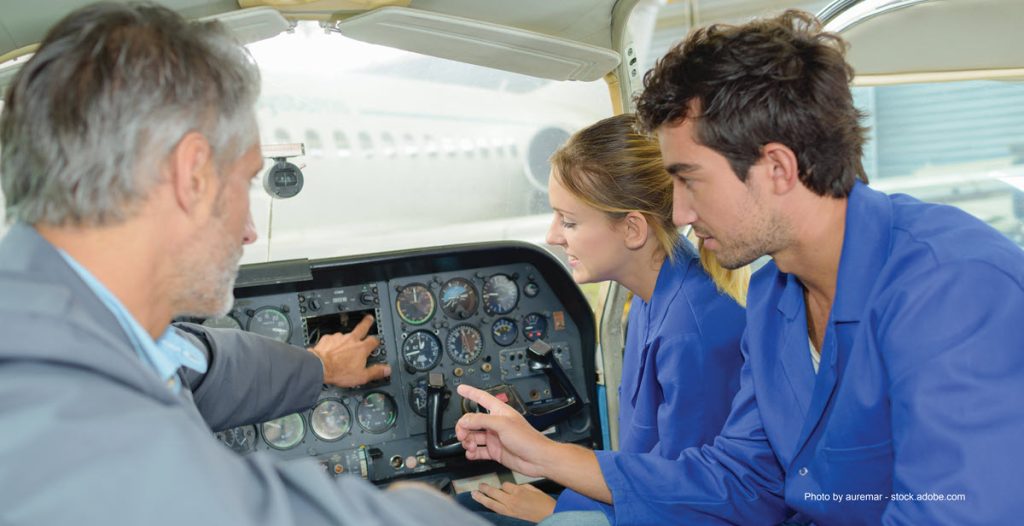
Okay, I need training. But what kind of training do I need?
The rest of this article can be seen only by paid members who are logged in.Have a website login already? Log in and start reading now.
Never created a website login before? Find your Customer Number (it’s on your mailing label) and register here.
JOIN HERE
Still have questions? Contact us here.

